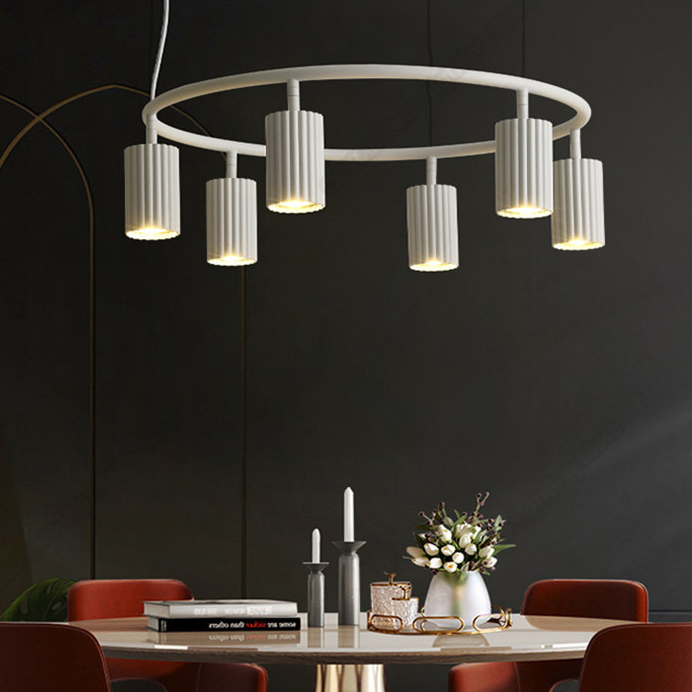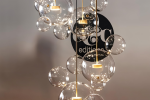Pendant lamps are a type of lighting fixture that hang from the ceiling, typically suspended by a cord, chain, or metal rod. They are known for their versatility in design and function, making them a popular choice for both residential and commercial spaces. Pendant lamps have a long history, dating back to ancient civilizations where they were used to provide light in homes and temples. Today, modern pendant lamps have become a stylish xlightings lighting solution that can enhance the ambiance and mood of any space.
The Benefits of Using Pendant Lamps in Your Home or Office
One of the main benefits of using pendant lamps is their versatility in design and function. Modern pendant lamps come in a wide range of styles, from minimalist and industrial to mid-century modern and art deco. This allows you to choose a pendant lamp that matches your personal style and complements the overall design of your space. Additionally, pendant lamps can serve multiple purposes, such as providing task lighting over a kitchen island or dining table, or acting as a decorative statement piece in a living room or bedroom.
Another advantage of pendant lamps is their energy efficiency. Many modern pendant lamps are designed to be energy-saving, using LED bulbs that consume less electricity and last longer than traditional incandescent bulbs. This not only helps reduce your energy bills but also contributes to a more sustainable environment.
Pendant lamps are also a space-saving solution, especially in smaller rooms where floor space is limited. By hanging pendant lamps from the ceiling, you can free up valuable floor space and create a more open and spacious feel in the room.
Furthermore, pendant lamps can enhance the ambiance and mood of any space. The soft, diffused light emitted by pendant lamps creates a warm and inviting atmosphere, making them perfect for areas where you want to relax and unwind, such as the living room or bedroom. Additionally, pendant lamps with adjustable brightness or dimmable options allow you to control the level of light and create different moods for different occasions.
Understanding the Different Styles of Modern Pendant Lamps
Modern pendant lamps come in a variety of styles, each with its own unique characteristics and design elements. Here are some of the most popular styles of modern pendant lamps:
1. Minimalist: Minimalist pendant lamps are characterized by clean lines, simple shapes, and a focus on functionality. They often feature neutral colors and materials such as metal or glass. Minimalist pendant lamps are perfect for contemporary and modern spaces, where simplicity and elegance are key.
2. Industrial: Industrial pendant lamps draw inspiration from factories and warehouses, featuring raw materials such as metal, concrete, and exposed bulbs. They have a rugged and utilitarian aesthetic, making them a popular choice for loft-style apartments and industrial-inspired interiors.
3. Mid-century modern: Mid-century modern pendant lamps are influenced by the design trends of the mid-20th century, featuring organic shapes, natural materials, and bold colors. They often have a retro feel and can add a touch of nostalgia to any space.
4. Art deco: Art deco pendant lamps are characterized by geometric shapes, luxurious materials, and intricate detailing. They often feature bold colors, such as gold or silver, and can add a touch of glamour and sophistication to any room.
5. Bohemian: Bohemian pendant lamps are eclectic and free-spirited, featuring a mix of colors, patterns, and textures. They often incorporate natural materials such as rattan or macrame and can add a boho-chic vibe to any space.
How to Choose the Right Size and Height for Your Pendant Lamp
When choosing a pendant lamp for your space, it’s important to consider the size and height of the lamp to ensure it fits proportionally and functions properly. Here are some tips to help you choose the right size and height for your pendant lamp:
1. Consider the size of the room: The size of the pendant lamp should be proportionate to the size of the room. In larger rooms, you can opt for larger pendant lamps or group multiple smaller ones together to create a focal point. In smaller rooms, choose a pendant lamp that is more compact and doesn’t overwhelm the space.
2. Determine the purpose of the pendant lamp: Consider the function of the pendant lamp and how it will be used in the space. For example, if you’re installing a pendant lamp over a dining table, make sure it is large enough to provide adequate lighting for the entire table.
3. Measure the ceiling height: The height at which you hang your pendant lamp will depend on the ceiling height of your space. As a general rule, pendant lamps should be hung at least 30 inches above surfaces such as countertops or tables to prevent glare and provide sufficient clearance.
4. Follow the rule of thirds: To create a visually pleasing arrangement, follow the rule of thirds when hanging multiple pendant lamps. Divide the height of the room into thirds and hang the pendant lamps at one-third or two-thirds of the total height.
The Best Places to Install Pendant Lamps for Optimal Lighting
Pendant lamps can be installed in various areas of your home or office to provide optimal lighting and enhance the overall design. Here are some of the best places to install pendant lamps:
1. Over dining tables: Pendant lamps are commonly used over dining tables to provide focused task lighting and create a stylish focal point in the room. Choose a pendant lamp that is large enough to illuminate the entire table and hang it at an appropriate height so that it doesn’t obstruct views across the table.
2. In the kitchen: Pendant lamps can be installed over kitchen islands or countertops to provide task lighting for food preparation and cooking. Choose pendant lamps with adjustable brightness or dimmable options to create different lighting levels for different tasks.
3. In the living room: Pendant lamps can be used in the living room to provide ambient lighting and create a cozy and inviting atmosphere. Hang pendant lamps at different heights to add visual interest and create a layered lighting effect.
4. In the bedroom: Pendant lamps can be installed as bedside lighting in the bedroom, replacing traditional table lamps or wall sconces. This not only frees up space on bedside tables but also adds a touch of elegance and sophistication to the room.
5. In the office: Pendant lamps can be used in office spaces to provide task lighting for workstations or conference tables. Choose pendant lamps with adjustable arms or swivel heads to direct light where it is needed most.
The Importance of Choosing the Right Bulb for Your Pendant Lamp

Choosing the right bulb for your pendant lamp is crucial as it can affect the overall lighting quality and energy efficiency of the lamp. Here are some factors to consider when selecting a bulb for your pendant lamp:
1. Types of bulbs: There are several types of bulbs available, including incandescent, halogen, fluorescent, and LED. LED bulbs are the most energy-efficient and long-lasting option, making them a popular choice for pendant lamps.
2. Wattage and lumens: Wattage refers to the amount of power consumed by a bulb, while lumens measure the brightness of a bulb. When choosing a bulb for your pendant lamp, consider the desired level of brightness and choose a bulb with an appropriate wattage and lumens rating.
3. Color temperature: Color temperature refers to the color appearance of light emitted by a bulb, measured in Kelvin (K). Lower Kelvin values (2700K-3000K) produce warm white light, while higher Kelvin values (5000K-6500K) produce cool white light. Consider the desired ambiance and mood of your space when choosing the color temperature of your pendant lamp.
4. Dimmable options: If you want to have control over the brightness of your pendant lamp, choose bulbs that are dimmable. This allows you to adjust the light level to suit different activities or moods.
Creating a Cohesive Design Scheme with Your Pendant Lamps
To create a cohesive design scheme with your pendant lamps, it’s important to consider the overall style and aesthetic of your space. Here are some tips to help you achieve a cohesive look:
1. Match the style of the pendant lamp with the overall design: Choose pendant lamps that complement the existing design elements in your space. For example, if you have a minimalist interior, opt for pendant lamps with clean lines and simple shapes.
2. Coordinate with other lighting fixtures: Coordinate your pendant lamps with other lighting fixtures in the room to create a cohesive look. For example, if you have recessed ceiling lights, choose pendant lamps that have a similar finish or design.
3. Use pendant lamps as a focal point: Make a statement with your pendant lamps by using them as a focal point in the room. Choose pendant lamps that have unique shapes, colors, or materials that stand out and draw attention.
Tips for Maintaining and Cleaning Your Modern Pendant Lamps
To keep your modern pendant lamps looking their best, it’s important to maintain and clean them regularly. Here are some tips for maintaining and cleaning your pendant lamps:
1. Regular dusting: Dust your pendant lamps regularly using a soft cloth or feather duster to remove any accumulated dust or debris.
2. Cleaning with a soft cloth and mild soap: If your pendant lamp needs more than just dusting, clean it with a soft cloth dampened with mild soap and water. Gently wipe the surface of the lamp, taking care not to wet any electrical components.
3. Avoiding harsh chemicals: Avoid using harsh chemicals or abrasive cleaners on your pendant lamps, as they can damage the finish or materials. Stick to mild soap and water for regular cleaning.
4. Checking for loose parts: Periodically check your pendant lamps for any loose parts or connections. Tighten any screws or fittings as needed to ensure the lamp is secure and safe to use.
How to Incorporate Pendant Lamps into Different Design Styles
Pendant lamps can be incorporated into various design styles to add a touch of style and functionality to any space. Here are some tips on how to incorporate pendant lamps into different design styles:
1. Traditional: In a traditional design style, choose pendant lamps with classic shapes and materials such as brass or crystal. Hang them in entryways, dining rooms, or living rooms to create an elegant and timeless look.
2. Contemporary: In a contemporary design style, opt for pendant lamps with sleek lines and modern finishes such as chrome or brushed nickel. Hang them in kitchens, living rooms, or home offices to add a touch of sophistication and style.
3. Rustic: In a rustic design style, choose pendant lamps with natural materials such as wood or rattan. Hang them in dining rooms, kitchens, or bedrooms to create a cozy and inviting atmosphere.
4. Coastal: In a coastal design style, choose pendant lamps with nautical-inspired elements such as rope or seashells. Hang them in living rooms, bedrooms, or outdoor spaces to create a beachy and relaxed vibe.
5. Eclectic: In an eclectic design style, mix and match different styles of pendant lamps to create a unique and personalized look. Hang them in any room where you want to add visual interest and create a conversation piece.
Elevate Your Space with Modern Pendant Lamps
In conclusion, modern pendant lamps are a stylish lighting solution that can enhance the ambiance and mood of any space. They offer versatility in design and function, energy efficiency, and a space-saving solution. By understanding the different styles of pendant lamps, choosing the right size and height, installing them in the right places, and selecting the right bulbs, you can create a cohesive design scheme and elevate your space. So why not try incorporating modern pendant lamps into your own home or office and enjoy the versatility and beauty they bring to your space?


